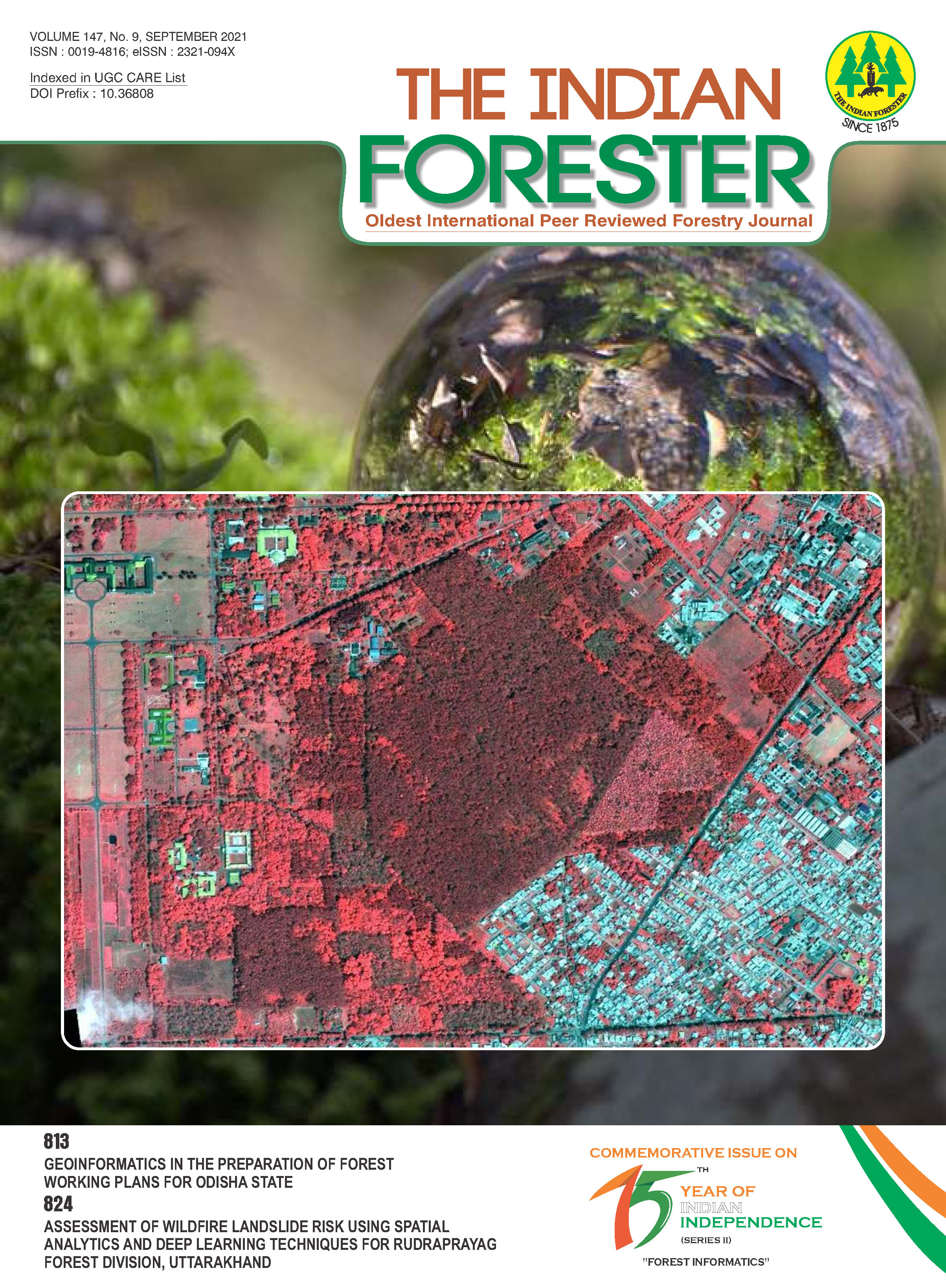Assessment of Potential Distribution of Dipterocarpus turbinatus C.f. Gaertn in Mahananda Wildlife Sanctuary of Darjeeling District, North Bengal through MaxEnt Model
DOI:
https://doi.org/10.36808/if/2021/v147i9/156268Keywords:
MaxEntModel, Human Influence Index, Dipterocarpus turbinatus.Abstract
The prospective application of ecological niche modeling can be seen in this study, which maps the potential distribution of Dipterocarpus turbinatus, one of the indigenous tree species in the Mahananda Wildlife Sanctuary. This study has also tested the efficiency of the MaxEnt model whether it has given accurate and précised result about the species distribution. In study area Mahananda Wildlife Sanctuary, Data was collected for multiple sample points at different location using GPS of the target species namely Dipterocarpus turbinatus (Garjan) over the entire Mahananda Wildlife Sanctuary area. The South-Western region of the study area has shown the higher potential, followed by the South-Eastern and Northern region. The prediction ranges from 0 to 1, 0 suggesting no potential for the occurrence and 1 shows high potential for the occurrence of the Dipterocarpus turbinatus. The North-Western region followed by Eastern region has shown the minimum support for the distribution of the Dipterocarpus turbinatus. Potential distribution of the Dipterocarpus turbinatus was predicted by MaxEnt model which involved multiple predictor variables like bioclimatic variables, elevation, slope, soil, LULC, and human influence index, where the maximum contribution of elevation was 39.1% having 14.2 % followed by Human Influence Index and soil 12.7% contribution respectively.References
Elith J., Phillips S.J., Hastie T., Dudı´k M., Chee Y.E. and Yates C.J. (2010). A statistical explanation of MaxEnt for ecologists. Diversity and Distributions. 1-15. DOI: 10.1111/j.14724642.2010.00725.x
Franklin J. (2009). Mapping species distributions: spatial inference and prediction. Cambridge University Press, Cambridge, UK.
Franklin J., Davis F.W., Ikegami M., Syphard A.D., Flint L.E., Flint A.L., Hannah L. (2013). Modeling plant species distributions under future climates: how fine scale do climate projections need to be? Global Change Biology, 19(2): 473483.
Khatibi M. and Sheikholeslami R. (2016). Ecological Niche Theory: A Brief Review. The International Journal of Indian Psychology, 3(2): 42-45.
Menon S., Choudhury B.I., Khan M.L. and Peterson A.T. (2010). Ecological niche modelling and local knowledge predict new populations of Gymnocladus assamicus a critically endangered tree species. Endangered Species Research, 11: 175–181.
Ortega-Huerta M.A. and Peterson A.T. (2008). Modeling ecological niches and predicting geographic distributions: a test of six presence-only methods. Revista Mexicana de Biodiverse, 79: 205- 216.
Phillips S.J., Anderson R.P. and Schapire R.E. (2006). Maximum Entropy Modeling of species geographic distributions. Ecological Modeling, 190: 231-259.
Prates-Clark C.D.C., Saatchi S.S. and Agosti D. (2008). Predicting geographical distribution models of high-value timber trees in the Amazon Basin using remotely sensed data. Ecological Modelling, 211(3–4): 309-323.
Ray D., Behera M.D. and Jacob J. (2016). Predicting the distribution of rubber trees (Hevea brasiliensis) through ecological niche modelling with climate, soil, topography and socioeconomic factors. Ecological Research, 31, 75–91.
Warren D.L. and Seifert S.N. (2011). Ecological Niche Modelling in Maxent: the importance of model complexity and the performance of model selection criteria. Ecological Applications, 21(2): 335-342.
Downloads
Downloads
Published
How to Cite
Issue
Section
License
Unless otherwise stated, copyright or similar rights in all materials presented on the site, including graphical images, are owned by Indian Forester.





